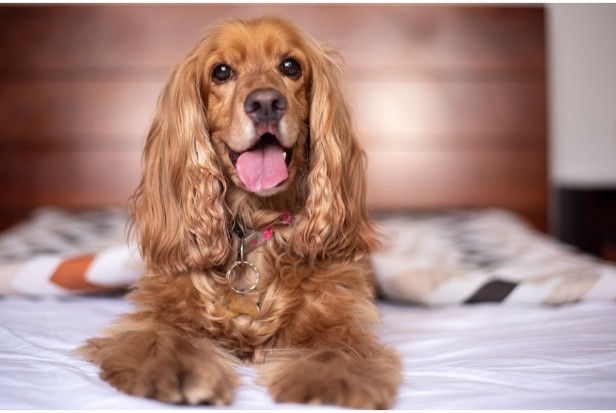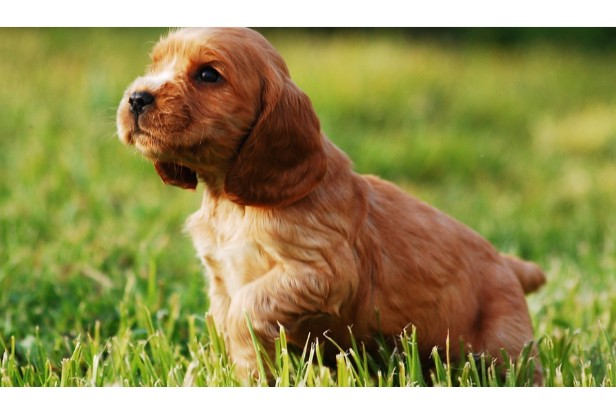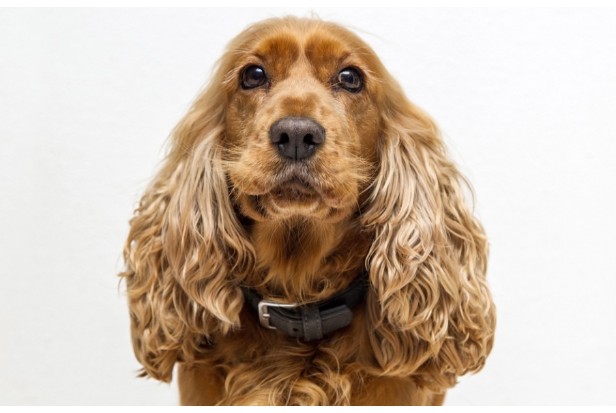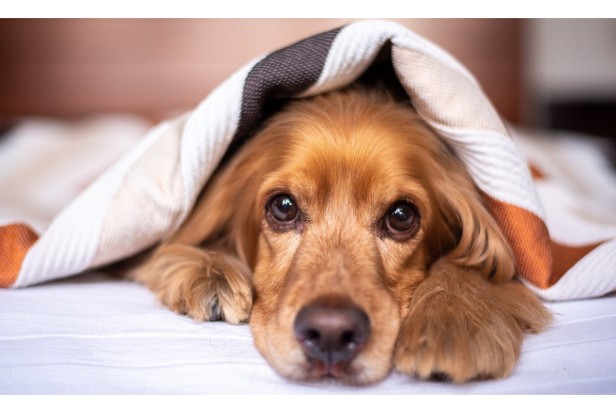One of the most adored canine breeds is the cocker spaniel. The public adores these purebred dogs.
A prospective owner, however, can’t help but wonder if Cocker Spaniels shed and what they can do to prevent this given their long hair.
Regardless of your age, you are probably familiar with the Disney adaptation of Lady and the Tramp. The magnificent Lady is a Cocker Spaniel, plain and simple.
Even so, we can’t help but think about how dog hair gets all over the place when we see her lovely coat.
Cocker Spaniels do they shed? How much shedding is occurring? They’re hypoallergenic, right?
You’re in the right place if you’re looking for solutions. We’ll give you a brief rundown of this breed and describe how to care for them. Let’s begin.
Table of Contents
- Do Cocker Spaniels Shed?
- The Difference Between the American and the English Cocker Spaniel
- Cocker Spaniel Hair Or Fur: What’s the Difference?
- What Type of Coat Does a Cocker Spaniel Have?
- Shedding Seasons
- Managing Cocker Spaniel Shedding
- How Often Do You Need to Groom a Cocker Spaniel?
- Tips for Grooming Your Cocker Spaniel and Reducing Shedding
- Grooming a Cocker Spaniel’s Ears
- Cocker Spaniel Haircuts
- Can Fish Oil Help My Cocker Spaniel Shedding?
- Are Cocker Spaniels Hypoallergenic?
- Is There a Way to Prove This?
- To Conclude: Cocker Spaniels Shed Only a Little to Moderately
Cocker Shedding Overview
COAT: Coat With A Silky Texture And A Medium To Long Flat Or Slightly Wavy Coat.
COLOR: Solid Colors Including Black, Liver/Brown, And Red/Golden. White Can Be Combined With Red, Black, or Liver to Make Parti Colors (Two or More Solid Colors).
SHEDDING: Medium
GROOMING NEEDS: High
Do Cocker Spaniels Shed?
A Cocker Spaniel is a majestic-appearing dog breed that consistently places first in dog competitions.
The American Kennel Club (AKC) states that this breed can be identified by its short stature, long, lush ears, and happy disposition. Their fur can range from white and golden to even parti-color.
In order to aid in hunting, this breed was developed. They would chase after gunned-down prey, which was typically a bird like a woodcock.
However, today’s Spaniel dogs are much more than just hunting companions. It makes a wonderful house dog and is a beloved pet of many nobles.
Cocker Spaniels, however, do they shed?
The double coat on these dogs must be maintained. These dogs not only have long, golden fur, but also a thick undercoat, which causes some loose hair to fly everywhere.
They don’t shed as much as one might initially think, though.
Most Cocker Spaniels shed only a little to moderately. Despite the fact that everyone will shed to some extent, it won’t be as bad as it is with Labradors. They are not the worst shedders among dogs despite having long fur.
You shouldn’t anticipate having to deal with a lot of dog hair getting on your furniture, even though the amount of shedding varies from dog to dog.
Naturally, regular grooming is a requirement for this, but aside from that, maintaining a Cocker Spaniel’s coat won’t take up much of your time.
You can consult a Cocker Spaniel growth chart to get an idea of the level of shedding you should anticipate since larger dogs have a tendency to shed more than smaller ones.
The Difference Between the American and the English Cocker Spaniel
The Cocker Spaniel breeds, both English and American, both shed to some extent. This shouldn’t come as a surprise because all dogs shed.
They do, however, have a different type of fur, and as a result, the amount of shedding will differ.
There are a few things to take into account, even though Cocker Spaniels of all breeds are thought of as low-maintenance dogs.
The amount of shedding done by English Cocker Spaniels is less than that of American Cocker Spaniels.
This breed is the one you should select if you’re looking for a good family pet that you won’t have to clean up after all the time.
You won’t have any significant issues even if you don’t brush your long coat every day.
An American Cocker Spaniel, on the other hand, has a much more delicate coat that sheds a little more. You will need to take extra precautions with his fine hair because it is prone to matting.
They are also thought to be more difficult to groom in general. Some owners contend that this is the prettier breed of the two and that the trouble is worthwhile.
Others, however, favor having their hair cut short by a stylist.
Cocker Spaniel Hair Or Fur: What’s the Difference?

We know Cockers shed, but are they shedding fur or hair? The Cocker Spaniel has hair, unlike some breeds that have hair in place of fur. Shorter and denser fur is the norm. Hair feels finer and much smoother than fur.
A robust protein called keratin makes up both dog hair and dog fur. Even though there is no chemical distinction between hair and fur, it seems like people refer to it as hair when it is long and as fur when it is shorter. The Pomeranian is an illustration of a canine breed with fur.
The Cocker Spaniel is not an exception; dogs with hair require more frequent brushing. A Cocker Spaniel in the full coat will require at least three half-hour sessions of hair brushing per week. If you intend to keep your Cocker in a long coat, you’ll need to keep her hair free of mats and debris.
For those planning to show Cocker Spaniel in the show ring, the American Spaniel Club breed standard calls for a “sufficient but not excessive coat.” They have noticed over the years that show Cockers appear to wear heavier coats.
What Type of Coat Does a Cocker Spaniel Have?
There are two coats on your Cocker Spaniel. Due to its density, the undercoat protects against cold, wind, and water. The top coat, which can be either smooth or rough in texture, lasts longer than the undercoat. The amount of shedding is the same whether the texture is smooth or rough. Sometimes, the coat’s texture may also be described as “feathery” or “silky.”
It is helpful to know that they blow their coats twice a year. These significant shedding times occur in the spring and fall. The increase or decrease in daylight hours results in a hormonal shift in your dog, leading to increased shedding.
Dogs shed in the spring to prepare for the hot summer months (their summer coats keep them cool, despite looking warm). To allow for the growth of thicker fur for winter warmth, they shed in the fall. High shedding is most common in Cocker Spaniels who are frequently outside.
Shedding Seasons
Cocker Spaniels typically shed their coats in the spring and the fall. As fur tends to change along with the temperature and daylight hours, this is typical for any breed that sheds.
During a season of shedding, it would be best to brush your Cocker every day. This is a bad time for these dogs to mat because they are particularly prone to it.
To get rid of any loose hairs, brush them daily. Your dog will remain comfortable and healthy as a result. Not to mention, this is the best way to maintain the cleanliness of your furniture.
Managing Cocker Spaniel Shedding

Grooming is the most effective method for reducing the shedding of any size. Although regular professional grooming sessions ought to be a requirement, not everyone can afford this.
Fortunately, you can take care of your Cocker Spaniel at home, especially if you own the low-maintenance English breed.
Even though Cocker Spaniels will look gorgeous with a fresh haircut and a silky coat, grooming isn’t just for appearances.
Preventing numerous health issues requires good grooming. Skin infection and dander result from matted fur. Not to mention it can hide injuries as well.
You could overlook your dog having a bothersome but minor wound or a thorn stuck to him. Your cherished family member’s health may be in danger as a result of this.
How Often Do You Need to Groom a Cocker Spaniel?
The long coat of a Cocker is delicate. When you have a breed that sheds frequently, you must set aside time for regular brushing. Many skin conditions, such as dandruff, can be avoided by doing this.
You should be aware that brushing is one way to deal with dog hair if you are familiar with how much Cocker Spaniels shed. This is also the only way to prevent matting, which is common in these canines.
But you might need to brush your dog every day if he enjoys strolling through the outdoors. Burrs, grass seeds, and other debris will be attracted to his long fur. You might even need to brush him after each country walk.
Too much loose hair may be another factor in your decision to groom your Cocker Spaniel every day. This may indicate that your dog is losing more hair, which you will need to deal with eventually.
On the other hand, you are free to reduce the frequency of grooming if your brush doesn’t pick up nearly any hair after daily brushing.
When it comes to washing, a similar rule of thumb applies here. While bathing your dog once a month is ideal, you might need to wash him more frequently if the need arises.
Give your Cocker Spaniel a bath if he’s dirty. He’ll need to have his paws washed after each walk if it’s raining. The highest-quality dog shampoo you can find should be used. You don’t want to hurt his sensitive skin.
Tips for Grooming Your Cocker Spaniel and Reducing Shedding
The differences between American and British standards for shedding and grooming are now somewhat clear to you. Cocker spaniels in English. Here are some more pointers and advice on how to successfully groom any variety of Cocker Spaniel.
1. The time of year will have an effect on how frequently you should brush your dog. These dogs typically shed more heavily in the spring and fall as a result of changing temperatures, as was previously mentioned.
2. Regularly bathe your dog. Purchase dog shampoo that won’t irritate your pet’s skin.
3. Rinse and dry your Cocker Spaniel thoroughly following baths. Even when using a mild dog shampoo, skin irritation can occur if a residue is left on your pet after bathing. Because of this, you should rinse your dog’s coat thoroughly. Make sure you have gotten all the way under the long fur. Following that, you can blow-dry your dog’s fur. Be careful not to overheat. If you do this, your dog’s skin might become dry and uncomfortable as well.
4. Check your pet’s skin as you are grooming. The time is now for you to be alert for any irritation that needs to be treated. You can look for deep mats and tangles that you might overlook if you were only scanning the topcoat while inspecting your pet’s skin.
5. Get the right supplies to effectively and safely detangle your dog’s fur and prevent excess shedding.
Grooming a Cocker Spaniel’s Ears

It is not sufficient to only care for your dog’s coat when you have a Cocker Spaniel. The very sensitive ears of Cocker Spaniels, in addition to their shedding, necessitate routine cleaning.
You must pay close attention to this body part!
Long, gorgeous ears that trail across the ground are a characteristic of cockers. They frequently end up in your dog’s bowl of food as well. It’s a haven for ear infections here.
Use a wet Q-tip to clean the ears of your Cocker Spaniel, but avoid getting any water inside them. He might feel pain from this, and it might even harm his hearing. Don’t delve too far, as well. A Cocker’s ear lobe is well-protected despite the length of the ears themselves.
It’s better to take him to the veterinarian than to run the risk of hurting him if you have any reason to believe that something has gotten inside his ear.
Cocker Spaniel Haircuts
While some owners shave their Cocker Spaniels, it’s not a wise decision to do so. For the first few weeks after shaving, a Cocker Spaniel may not shed, but the new fur that grows in may not be of good quality.
In fact, after shaving, most Cockers shed significantly more!
Additionally, shaving won’t keep your dog cool. The coat of a dog is designed to keep him cozy in any weather. Consider a dog’s fur to be natural weather protection and insulation.
It will block out both heat and cold. Your Cocker will be stunned once you’ve removed all of the hair. His health could be negatively impacted when he suddenly becomes susceptible to heatstroke and the chills.
What you ought to trim, though, are the tufts of hair you can see in between his paws. Additionally, you might spot them on the head and ear leathers of a Cocker.
Matting can be avoided by trimming away this extra fur. Additionally, it will make your dog appear well-kept and tidy. It goes without saying that you are free to opt-out if you so choose. Many dog owners love when their dogs look hairy and fluffy.
These tufts have a tendency to fade over time, so that is another reason you might want to trim them. Your dog may appear older if they were lighter than the rest of its fur from the start.
However, you might prefer this appearance on your dog. He’ll appear to have had fancy highlights put in.
Can Fish Oil Help My Cocker Spaniel Shedding?
Fish oils are beneficial for most dogs when added to their diet. Everyone who meets my Cocker Spaniel comments on his luxurious coat. “He’s so soft,” they say as I beam proudly from the other end of the leash.
The benefits of a quality omega-3 fish oil as part of a dog’s diet include, but are not limited to:
- Shinier coat
- Less dry skin
- Reduction in shedding
- Allergy control
- Prevention and treatment of autoimmune disorders
- Helping dogs with idiopathic epilepsy when taken with regular medication
- Cancer prevention
Read on for more information on fish oil for dogs, the brand we recommend, and how it may reduce excessive shedding.
Are Cocker Spaniels Hypoallergenic?
Knowing how little Cocker Spaniels shed, you probably assume that they won’t trigger any allergies.
Unfortunately, no dog is completely hypoallergenic, but what does the term “hypoallergenic” even mean? The general consensus is that non-shed dogs won’t trigger allergic reactions.
Poodles, Maltese, Bichon Frise, and, some claim, Cocker Spaniels are hypoallergenic canines that don’t cause too many breathing issues. This does not preclude the possibility of allergies, though.
Not just the fur, but many other areas of a dog’s body can contain allergens. In actuality, it’s what’s on the hair rather than the hair itself that gives you problems. Proteins found in a dog’s saliva, urine, and dander are what are actually causing allergic reactions.
These proteins are carried by a dog’s hair and then disperse throughout your home. Because of this, many people believe that dogs who don’t shed won’t cause allergies, but this isn’t the case.
Is There a Way to Prove This?
However, don’t be fooled by breeders’ claims that their dogs are hypoallergenic. Science has established that the amount of shedding has no bearing on an individual’s likelihood of developing allergies.
Researchers collected dust samples from the residences of dog owners with and without allergies to dogs in 2011.
They came to the conclusion that there isn’t much of a difference in the number of allergens between these two categories. In fact, a study the following year demonstrated that even dogs thought to be hypoallergenic contained more specific allergens in their hair samples!
In other words, it doesn’t really matter how much Cocker Spaniels shed. The likelihood is that you will experience an allergic reaction to a Cocker Spaniel if you are allergic to dogs.
This does not mean that you should give up on getting a dog, though.
Every dog is different from the next and has unique body chemistry. Any number of allergens could cause your body to react. If you had a severe allergic reaction to one dog, you might not even sneeze after interacting with another one.
Each of us has a unique immune system that functions differently.
If you think you might be allergic to dogs, it would be wise to speak with your doctor before acquiring a new four-legged family member. The best guidance will be provided by a professional after they have assessed your body.
To Conclude: Cocker Spaniels Shed Only a Little to Moderately
You now understand the response to the query, “Do Cocker Spaniels Shed?” Although this breed doesn’t need much upkeep or cleaning, you should still give them regular grooming sessions to avoid matting.
Unless you are allergic to dogs, neither the American nor the English Cocker Spaniel will give you any headaches, despite the sub-breeds slight influence on the amount of shedding.
Despite what the breeders may try to convince you, a dog cannot be truly hypoallergenic.
Visit your neighborhood vet right away if you notice a change in the amount of shedding. You don’t want to run the risk of letting health issues like hypothyroidism go undiagnosed.
